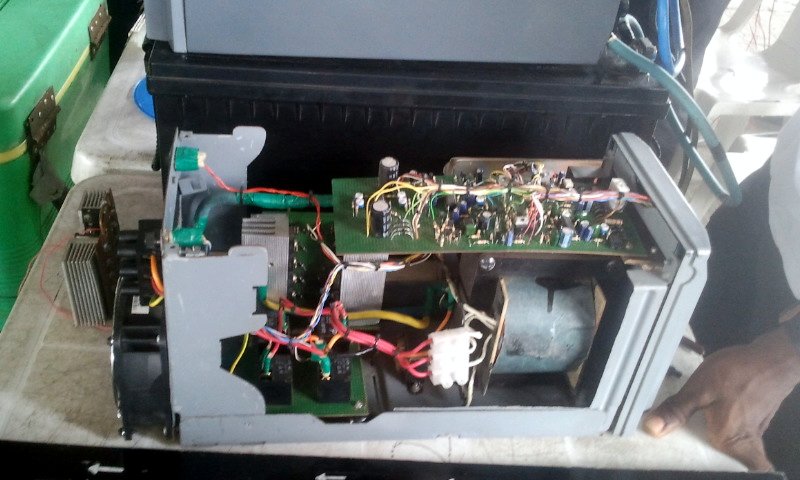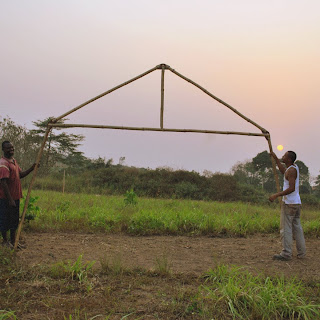of the African Institute for Mathematical Sciences.
, director of Canada's Perimeter Institute and winner of the 2008 TED Prize (Watch his powerful
It was amazing to spend an afternoon overlooking the Atlantic, discussing the world of ideas with AIMS Ghana's pan-African group of young mathematical minds.
The topic was entrepreneurship, which at first I found strange — because I have never thought of myself as an entrepreneur. Then I realized I have co-founded two businesses:
Low Design Office, with Ryan Bollom and
DSGN AGNC, with Quilian Riano (now run by
@quilian).
But I have always thought of them as organizations first: entrepreneurship is a subset of
enterprise. Whereas an entrepreneur is someone who sets up a business and assumes the associated risk, the term enterprise refers to any organization (business, non-profit, government agency) that integrates people and technology to accomplish a task, typically one which is challenging and requires nontrivial effort over time.
We can assume that the motivating factor behind any such organization is that it generates (or has the potential to generate) significant value. That value can be either economic OR social. I tend to prioritize the social value aspect, while others better understand the nature of the class of non-physical units everyone likes to talk about called “money”.
Copied below are notes from what I shared: some ideas, based on my own experiences, about setting up a “social enterprise” (not necessarily how to make a fortune through capitalist exploitation).
There is a hip word "ideate” in design thinking circles (it feels new, but dates to the 17th century,
meaning "to form an idea").
According to IDEO, the corporate mother ship of design thinking, “Ideation is the process of generating, developing, and testing ideas”. Kind of like “brainstorming” — but with less focus on producing tons of ideas rapidfire, and more emphasis on a specialized approach to actualizing good, great or transformative (innovative) ideas.
If you want to be an entrepreneur or create a social enterprise, then the starting point is to (decide to) convert your idea(s) to action. Anyone can have an idea; the difference is to act on that idea. The simplest way to activate your idea is to just start doing (or making).
Never psych yourself out. Listen to, but refuse to be either overwhelmed or intimidated by the little voices in your head discouraging you (or the not-so-little voices surrounding you). If you have faith that you can do something, chances are you can. (Maybe not on your own.)
You have to make plans. But remember, a plan is near-meaningless if it does not include goals! They can be simple, complex, conditional, short-term, long-term, ideal, whatever. You just have to set them, in order to make your planning concrete.
Same goes for discipline — the foundation of getting stuff done. The most rewarding goals are often the most difficult. You will likely have to put in inordinate amounts of time and energy in order to achieve your goals. Perseverance is paramount. Keeping records keeps you on task, helps you track your progress and serves as tangible evidence to you that you are indeed doing what you set out to do.
The importance of self-reflection cannot be overstated. It is easy to fall in the trap of external validation: looking to what others say about you, your ideas, your goals, your work, your appearance, your organization, etc. in order to assess your own self-worth, relative success or probability of success. It is great to get input (and it is almost safe to say you can never get too much). But at the end of the day, take it all for a grain of salt. Look inward to assess your performance metrics. And based on your independent but comprehensive self-evaluation — originating from your own perspective — be prepared to make changes to yourself, your tactics or even your strategy, as required, in order to achieve your goals. This should be on-going and iterative.
Dream big and be empowered to make your dreams your goals. Never fear failure — that is a self-defeating mental trap! If failure finds you, embrace it! Look to your failures for insight. You can learn more than you can ever imagine by ending up where you did not intend to go.
No wo/man is an island. You may think you can do anything by yourself, but it is highly probable that you will need help, support, guidance or a yin to your yang somewhere along the way. (Business studies and experts often say that the most successful businesses rarely have a single founder, regardless of the “founding story” narratives fabricated for marketing and posterity).
Build your teams properly. That means share work/loads, include all team members (at all levels!) in as much of the process as possible, and make sure everyone has real and legitimate reasons to not just show up everyday, but to show up and do their utmost best to advance the overall project (not just their tiny piece of the puzzle).
Multiple plans vs. planning in multiple ways: The last point (the +1 of 8+1) took a bit of explaining, but I think it is super critical and often gets overlooked. At the same time that the cliché business advice "focus on your core business" is valid, it is equally important to not just have a plan A, B, C, etc. but also to have a “side hustle”. To plan
multiply translates to not only having multiple strategies to achieve the same goal(s), but additionally to also have plans in place to accomplish entirely different agendas — and to act on them all. We all know what hustle means (keep at it always, no matter what, any way you can imagine), and while usually this implies the idea of making money (and often by perhaps dubious methods) take it simply to mean never put all your eggs in one basket. Many times an unrelated initiative (side hustle) can teach you important skills, give you innovative ideas, bridge funding or seed capital, or lead to an unexpected breakthrough in your main — completely unrelated — business.
Iterative nature of design (D=):
Made this graphic a
while back to explain how I understand design and how we use it in the office. Remarkably, they were able to decipher the pseudo-math! (Can you?)
Design Innovation:
IDEO is awesome, but I believe their model fails to reach true fundamentals, mathematically speaking. Their approach (in their own words) is human-centered, as per this
Venn diagram, whereas the universe is NOT anthropocentric. Only our individual and conceptual perception and conceptualization of it is — at least in most cases, if not all.
Since last year, Dr.
Yasmine Abbas and I have been working on a design theorem called “
Stellate Innovation” which postulates a methodology for inducing urban innovation. It was fun to present the introduction to this text to the AIMS Ghana group — especially because they seemed both to understand it and to immediately recognize its potential applicability to their own work, lives, thinking and, ideally...the enterprises they will in all probability launch in industry, academia or government once they graduate from AIMS and radiate outward across Africa and planet Earth.










































